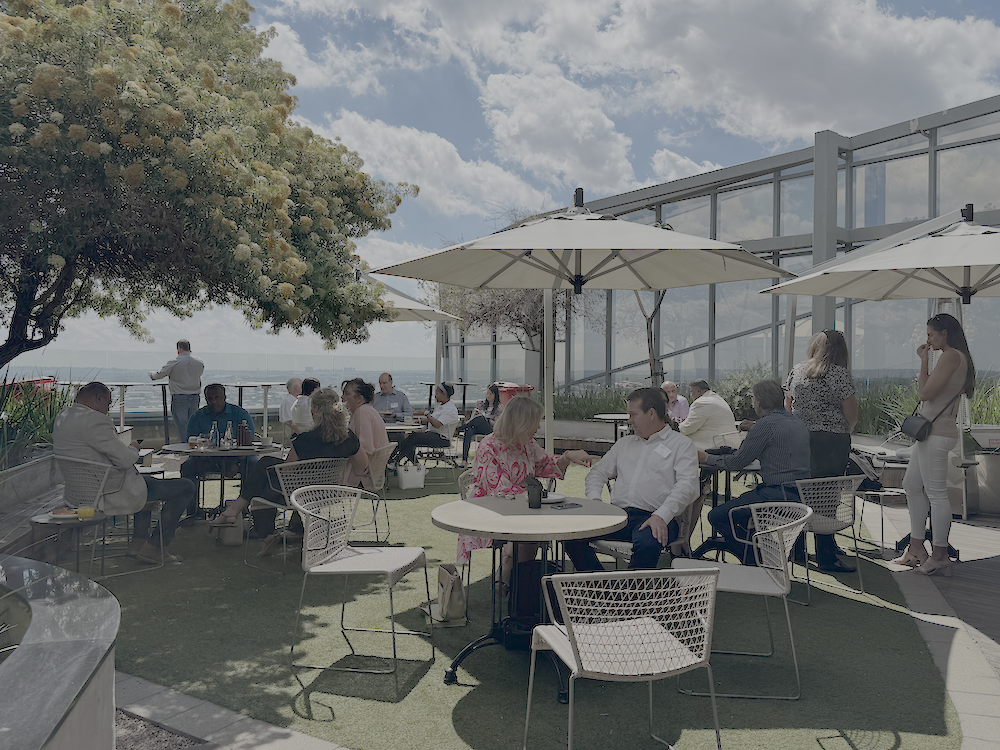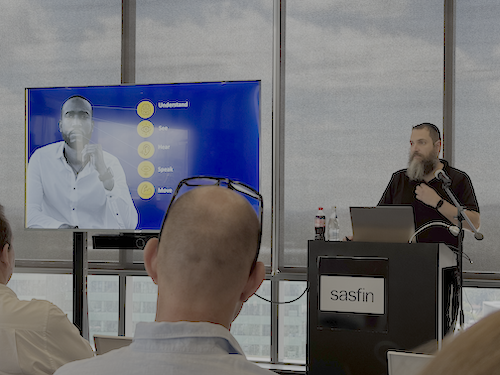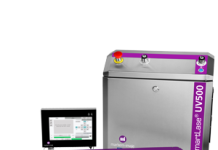On Friday 29 November, Printing SA held its Central Chamber CEO Breakfast at Sasfin Holdings in Sandton. The main topic of the event was ‘Winning in the Age of AI,’ with a presentation given by guest speaker and AI guru, Dean Furman, CEO of 1064 Degrees. Africa Print was a proud media partner of the event.
Andrew Tinker, Central Chamber Chairman and Non-Executive Director at Printing SA, spoke about the challenges, triumphs and spirit of collaboration in the printing industry within recent years: ‘While we’ve faced some hurdles, such as global economic shifts and supply chain disruptions, we have also seen remarkable resilience and innovation across the board. However, it has not only been about technology and progress. It has been about the strength of our community. This forum, and the broader Printing SA network, has always been a place where we come together to learn, to share and to grow.’

Furman’s presentation focused on how embracing the AI revolution will unlock new opportunities across all sectors within business, and ultimately help create a tenfold increase in productivity. Furman broke down the capabilities of AI into five easily digestible points:
‘Understand’ correlates with AI’s ability to recognise and produce patterns. This ranges from AI chatbots, such as Chat GPT, which uses machine learning to understand and respond to human language, to AI platforms such as Claude AI, which has many functions, including basic software and code generation. AI’s ability to understand opens up possibilities for increased productivity. Easy access to information in chat form and the hastening of tedious tasks, that can now be handed over to AI for speedy turnaround, allows for more time to be devoted towards tasks that require more time and the most human input.
‘See’ speaks to AI’s image generation abilities. Generative artificial intelligence programmes, such as Midjourney and Copilot, generate images from natural language descriptions or prompts. Image generation AI can also be seen in graphic design platforms, such as Canva. Certain AI programmes even specialise in specific types of image generation, such as Piktochart, which produces infographics.
‘Hear’ involves AI’s ability for natural language processing, and producing voice biometric solutions. Certain AI programmes will allow you to audibly communicate directly with a chatbot. AI can also be used to identify individual voices, which can be used in security purposes or for detecting accents and cadences.
‘Speak’ shows AI’s ability to generate natural language, with AI programmes like NotebookLM allowing people to take notes and even receive feedback from the AI chat in an accent or language they are familiar with. During the presentation, Furman asked the AI programme to address the members of Printing SA in a South African accent, and then in isiZulu. Both times, AI’s abilities did not disappoint. With AI platforms like Bland AI, companies can now even automate their customer helplines by using an AI bot to communicate with people who call in. Another amazing feature of select AI platforms is the ability to type in a prompt, such as ‘Write me a country song for the printing industry using Spongebob’s voice’, and moments later you will receive a piece of music that meet those specifications.
‘Move’ speaks to the robotic capabilities of AI, which although have made the least advancement in the field so far, will most likely become one of the most important parts of it. Companies are already attempting to develop robots powered by AI to help humans with household chores, such as laundry and dishes.
The concern of job losses due to AI was raised by members in the audience, who asked whether we should be striving for some sort of responsible AI. Furman agreed and added that AI will certainly make some tasks, and therefore some jobs, redundant. Furman asked: ‘What can you do to add value that AI can’t do?’ He added that prompting AI is key, and so people who learn how to ask AI the right questions will be a valuable commodity in the workforce. Seeing AI as a threat will hold you back from your potential with using it. Using AI at its full multimodal, or multimedia, potential should be seen as adding to your workflow, as machine learning can process information from different modalities, such as images, videos and text. ‘You shouldn’t be aiming at competing with AI, but commercialising it,’ added Furman. It might be time to ask yourself, ‘What is your attitude towards AI?’
PRINTING SA
+27 11 287 1160
info@printingsa.org
http://www.printingsa.org





















